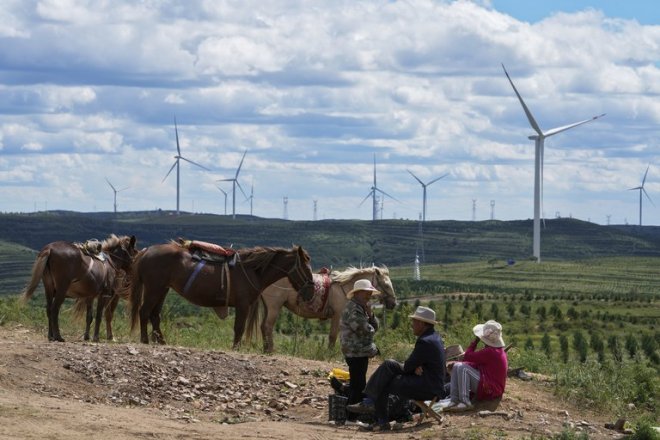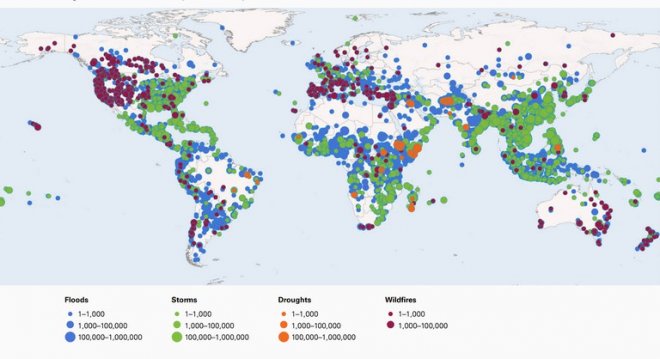Asia-Pacific jobs at risk from climate change, but cleaning up can lift growth-report
Hundreds of millions of workers in the Asia-Pacific region are vulnerable to climate change impacts in their sectors, but trillions of dollars could be added to economies during the transition to net zero carbon emissions if the countries seize opportunities, with giants China and India set to benefit the most, a report said Wednesday.The Asia-Pacific region is regarded as one of the most vulnerable areas globally to climate change impacts, and is poised to experience a temperature increase rate twice as fast as anywhere else.
Approximately 43% of workers in the Asia-Pacific region are employed in vulnerable sectors, such as agriculture, conventional energy, manufacturing, transportation and construction, and so they are particularly susceptible to any disruption, said the new report released by Deloitte Asia Pacific, an accounting firm.
However, the report said that if countries seize decarbonization and green innovation opportunities through a rapid and coordinated transition, they could add U.S. $47 trillion to the region’s economies by 2070 and create 180 million jobs by 2050.
Pradeep Philip, Head of Deloitte Access Economics, said that 80% of the skills required for jobs in the increasingly decarbonized economy already exist.
“How governments act individually and collectively to support these workers to adapt, contribute and thrive as our economy transforms will be one of the biggest determinants of equality in the coming decades,” Philip said.
“No country can do it alone, but together it is possible to influence a just transition where the benefits far surpass the cost.”
Deloitte said 48% of China’s total workforce – the highest proportion in the Asia-Pacific region – are employed in industries most vulnerable to the physical impact of climate damage and the economic transition to net zero carbon emissions.
India has 43% of its workforce in vulnerable industries, while in Southeast Asia, 38% of workers are employed in such sectors.
In Laos and Myanmar, Deloitte said that almost half the workforce is engaged in the at-risk agriculture sector.
 Villagers take a rest near horses on the grassland with wind turbines in the background in Zhangbei county, in north China"s Hebei province, Aug. 15, 2022. Credit: AP
Villagers take a rest near horses on the grassland with wind turbines in the background in Zhangbei county, in north China"s Hebei province, Aug. 15, 2022. Credit: AP China, the world’s top carbon dioxide emitter, has pledged to reach net zero by 2060 and is currently driving massive growth in the renewable sector.
China, the world’s top carbon dioxide emitter, has pledged to reach net zero by 2060 and is currently driving massive growth in the renewable sector.The Deloitte report said almost two-thirds of the world’s renewable energy jobs are in Asia, with China alone accounting for 42% of the global total in 2022.
Since 2020, China’s new energy vehicle industry has been booming with policy support from the government. Last year, China sold 5.67 million electric and plug-in hybrid electric vehicles, about 60% of total sales globally.
China has already established 21 undergraduate programs on curbing carbon emissions and carbon neutrality and 42 colleges to train talent in the country, Deloitte said, as part of Beijing’s effort to tackle climate change while pursuing economic growth.
Earlier this month, another report said China will account for more than half of the increase in the deployment of renewable power worldwide this year, which would be the largest annual rise in new renewable capacity ever.
However, China also continues to emit record levels of carbon dioxide, with emissions set to rise to an all-time high in 2023.
China’s CO2 emissions grew by 4% in the first three months of 2023 compared to last year to hit a quarterly record high of more than 3 billion metric tons, said an analysis by the Centre for Research on Energy and Clean Air (CREA), a Finland-based independent organization, in June.
The most significant contributors to the growth in emissions were coal-powered electricity generation and higher production of construction materials, mainly steel and cement.
Edited by Paul Eckert.
[圖擷取自網路,如有疑問請私訊]
|
本篇 |
不想錯過? 請追蹤FB專頁! |
| 喜歡這篇嗎?快分享吧! |
相關文章
AsianNewsCast























